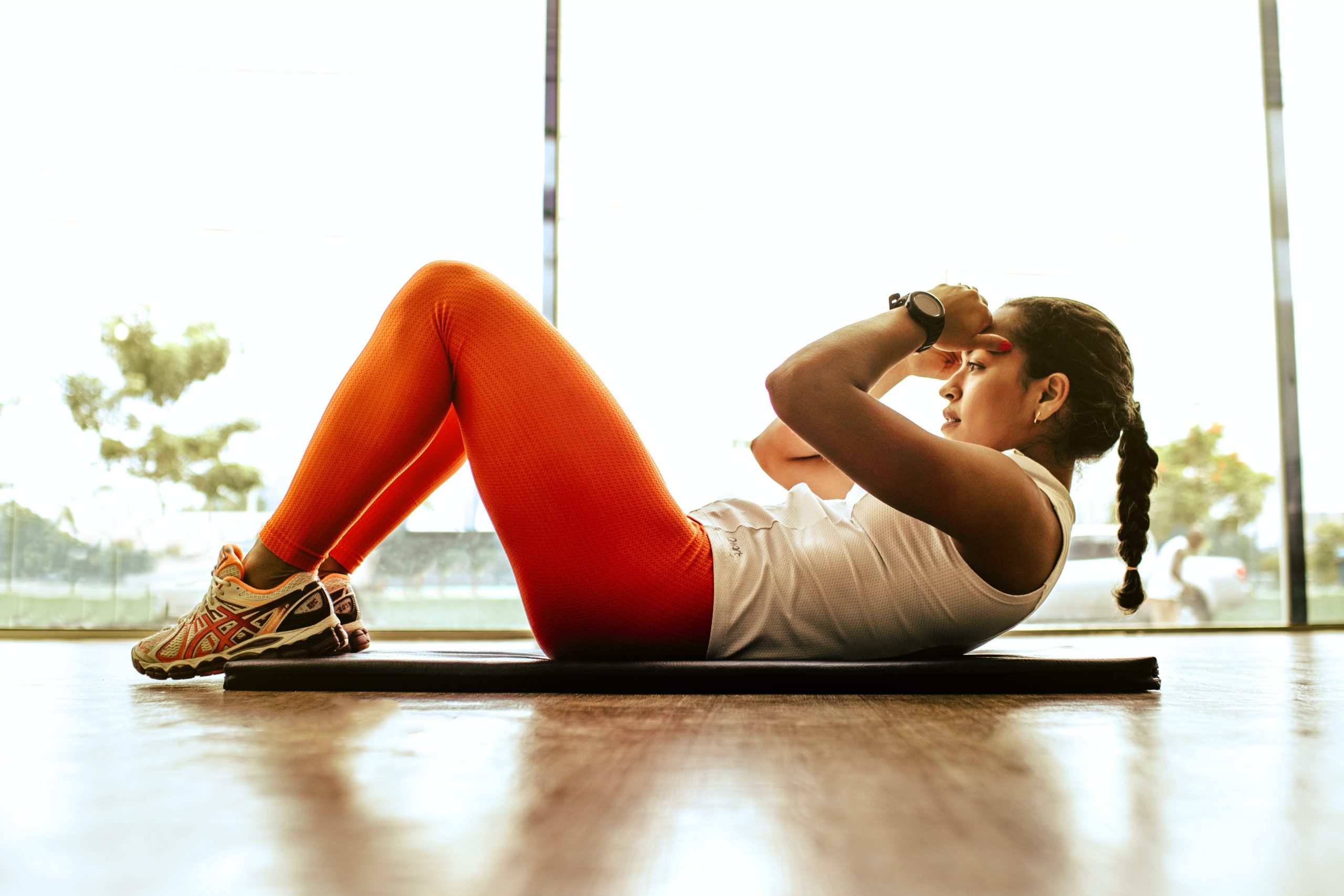How — and Why — to Stay Fit When All the Gyms Are Closed
A statewide lockdown is actually the perfect time to start or continue with a home exercise program. An NC State fitness expert tells you how to do it safely and effectively.

For many of NC State’s faculty and staff, swinging by the gym before work in the morning or on the way home in the evening is a normal part of their day — or at least it was, until the coronavirus pandemic upended everyone’s routines.
Now that all gyms and fitness centers are closed, some are wondering how to keep exercising during a quarantine lockdown. For those who weren’t exercising to begin with, not much has changed in that regard; but nearly everyone is feeling greater stress and anxiety these days.
And that’s exactly why now is the perfect time to start exercising at home, according to Will Craig, assistant director of fitness for Wellness and Recreation at NC State.
“Physical activity is one way for people to manage the stress they feel in everyday life,” says Craig. “So right now, when you’re stuck at home — or maybe working on campus as a mandatory employee — and feeling even more stress than usual, you can use physical activity to help you deal with what life is presenting you.”

Craig, who is a certified personal trainer and group fitness instructor, provides direction and vision for all fitness programs, services and facilities in Wellness and Recreation. He also leads his unit’s efforts to collaborate with campus partners to incorporate physical activity opportunities throughout the university.
Craig says his team’s ultimate goal is to enhance everyone’s overall wellness, not just their physical fitness.
“With all the research we have today, we know that physical activity is just one component of holistic wellness,” he says.
To that end, Wellness and Recreation has launched a campaign called Move30, which encourages people to move at least 30 minutes a day, five days a week, to achieve 150 minutes of physical activity per week as recommended by the American College of Sports Medicine.
“Research shows that people who achieve that level of activity have a tendency to have better moods, a higher level of energy and improved concentration,” he explains. “They also tend to have less stress, anxiety and depression.”
The benefits don’t stop there. “People who get that 150 minutes in every week also tend to sleep about an hour more per night,” he says. “It’s better-quality sleep, too. Physical activity has a drastic positive impact across many areas of your life. So under lockdown, when you have more going on around you if you’re working at home — and more going on in your head no matter where you are — if you exercise, you might be able to focus better, work more effectively and complete your tasks more easily.”
Craig offers these tips for exercising safely and effectively at home:
1. Start slow.
If you’re starting an exercise program from scratch, the same cardinal rule applies whether you’re doing it at home or at a gym: Start off slowly.
“It might even just be moving for five minutes at a time to add up to 30 minutes,” Craig says. “Research shows that if you split your 30 minutes up into five-minute chunks, you get the same benefits as people who move for 30 minutes all at once. So start there if you need to. Then you can slowly build up to moving for longer periods of time.”
2. Find a movement you enjoy.
“One of the most common things I hear is that people don’t like working out, they don’t like exercise,” Craig says. “But ‘exercise’ is actually not the goal here. We’re calling our campaign ‘Move30,’ not ‘Exercise30,’ because if you’re moving it doesn’t matter what type of movement you engage in. As long as you meet the criteria for what counts as ‘movement’ — which means moving enough to increase your heart rate and speed up your breathing pattern — you get the benefits,” he explains. “So we want you to find your own movement that you like doing, because if you’re doing something you like, you’re more likely to keep doing it.”
3. Use all the resources at your disposal.
Craig says fitness companies are providing free resources online, such as instructional videos and recorded workouts, that make it easy to exercise at home. In addition, Wellness and Recreation has launched the WellRec at Home initiative to help people engage in fitness activities no matter where they are.
“Through WellRec at Home we’re teaching about 30 virtual classes per week,” he says. “Anyone with a Unity ID can log into a live class taught by one of our certified instructors in a variety of formats — like yoga, cardio dance, kickboxing, barre — and it’s all free of charge.”
To register for virtual classes, first download and install the WellRec phone app. Then use the app to register for the classes you want to take.
WellRec at Home also offers a variety of prerecorded workouts for those who can’t attend a scheduled live class. In addition, the initiative provides videos on meditation, mindfulness, stress reduction and other practices that support mental and emotional well-being.
Beginning April 20, Wellness and Recreation will also offer an online group wellness coaching program called the Healthy Living Series. This four-week series of educational sessions, available free of charge to all faculty and staff, will cover healthy strategies for stress management, nutrition and mindful movement.
In Craig’s opinion, there’s an unintended upside to all the gyms being closed: “One of the cool things about exercising at home is that there’s no one there to see you or judge you,” he says. “You can truly take it at your own pace.”
- Categories:


